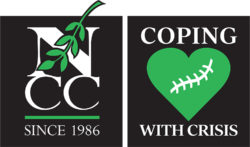September 9, 2019
While we all are susceptible to vicarious trauma, there are ways we can build our emotional resilience. Emotional resilience is the ability to bounce back or recover after crises, stressful events, or traumatic experiences. Having a high level of emotional resilience doesn’t make us immune from experiencing distress after exposure to a trauma, but it can help us return to our regular selves more quickly and without a shattered worldview.
Awareness
Awareness is the first step toward building emotional resilience and coping with vicarious trauma. If you aren’t aware of how you’re feeling, you won’t know when to intervene. Check in with yourself every day. How do you feel? What do you need? Who or what can help you? Understand your own triggers. Know your warning signs.
Feel your feelings

As much as you can, avoid shutting down, going numb, or denying your emotions. Those methods may feel like a short-term solution but will lead to problems down the road as they build up inside. Laura van Dernoot Lipsky, the founder and director of the Trauma Stewardship Institute, tells us: “You don’t get to be selectively numb. So, if you’re going to numb out your sorrow, you’re also going to numb out any possible happiness you can have.” In order to really experience positive emotions, we have to feel the uncomfortable ones, too.
Set strong boundaries (professional, personal, and even with technology!)
Whether it’s with family, friends, or colleagues, strong boundaries are important in decreasing the potential for additional stress and overwhelm. Where you’re able, say no to taking on additional tasks or responsibilities at times when you’re struggling. Take a real lunch break every day at work – away from your desk. Speak up when the workload is too much. Ask for help from friends or family when you need it. Consciously decide when and where you will take in potentially triggering information from the news and social media. This might mean unfollowing certain profiles or pages, turning off news alerts, or deleting apps from your phone if you are checking them too often.
Build / utilize your support network

Vicarious traumatization can lead to social isolation, so having supportive people in your life who can help you through difficult emotions is crucial in building emotional resilience. Stay in contact with loved ones who know you best – they can offer feedback if you stop sounding or acting like yourself. While talking about your experiences can be incredibly beneficial, especially with others who “get it,” watch out for unhelpful venting. Do conversations become negative rather than supportive? Do you leave them feeling worse rather than better? If so, it might be time to set boundaries around how you and others discuss difficult topics.
Access professional resources when needed
Some topics are better to talk about with a professional than with friends, family or colleagues. If your own trauma history comes up in connection with the vicarious trauma, your mental health starts to be negatively impacted, or you are concerned about your substance use as a coping mechanism, then it’s time to seek a professional. Whether it’s through The Northwest Catholic Counseling Center or another provider, help is available.
Develop an internal locus of control

Research has shown that people who are more emotionally resilient have some sense of being in control over their lives. While we can’t control what happens to us, we can learn how to control how we respond, and doing so can improve our attitudes and decrease feelings of helplessness and hopelessness. When life starts to feel out of control, take time to reflect on all of the decisions you make in a day: What time did you decide to get out of bed? What did you choose to wear today? What did you choose to eat for breakfast? Whose texts did you decide to respond to first? Etcetera, etcetera. It may seem simple, but forcing your brain to pay attention to times you were able to make a choice can help shift neural patterns from responding to vicarious trauma to building emotional resilience.
Practice mindfulness
Because our brains are wired to pay more attention to negative stimuli than positive ones to help us survive, taking time to pause and notice all of the good around us can be useful in building emotional resilience. Experiencing gratitude for what we have is important, but can alternatively bring on feelings of guilt, and it’s important to be able to hold both emotions instead of allowing one to negate the other. If you’re feeling too overwhelmed to focus on positive thoughts – which certainly can happen with vicarious trauma – take time to pause and connect with your surroundings. When you look around, what do you notice that is pleasing or comforting? It might be something in nature, a photo that sparks a happy memory, a color, or even a sound or smell. Take a minute to focus on this detail until you start to feel even slightly less overwhelmed.
Be kind to yourself
Lastly and most importantly, be kind to yourself. Eat well, get enough sleep, go outside, move your body, exercise. When you are strong and healthy, you will be less susceptible to vicarious trauma. Maintain your sense of humor. As much as you can, let go of negative self-talk or beating yourself up about how you’re feeling. Remember that vicarious trauma is an involuntary response to an overwhelming situation, not a sign of weakness. There is help and hope.
Learn more about vicarious trauma at our blog post Understanding Vicarious Trauma.
– Lauren Shechter, LCSW
Sources:
American Psychiatric Association. (2013). Diagnostic and statistical manual of mental disorders, DSM-5 (5th ed.). Washington, DC: American Psychiatric Publishing
Clements, et. al. (2018). Secondary Trauma in the Workplace: Tools for Awareness, Self-Care, and Organizational Response in Montana. https://www.montana.edu/cairhe/other-investigators/knight-ellis/Secondary-Trauma-in-the-Workplace.pdf
Ries, Julie. (2019). Experiencing PTSD After Shootings, Even If You Weren’t There, Is Normal. https://www.rewire.org/living/experiencing-ptsd-after-shootings-normal/
van Dernoot Lipsky, L. (2009). Trauma stewardship: An everyday guide to caring for self while caring for others. Oakland, CA: Berrett-Koehler.






